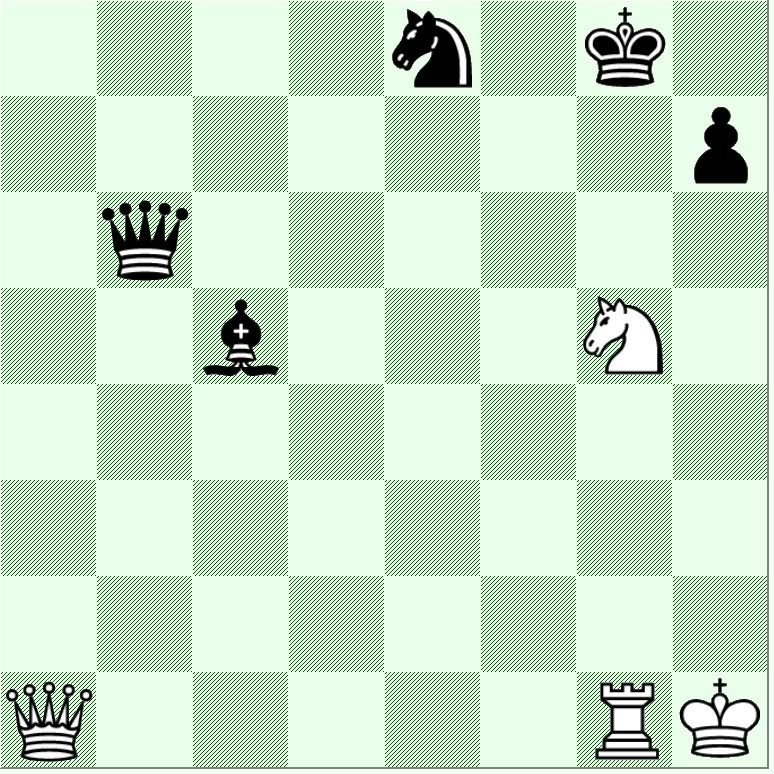
Objectively, Black's move here might not have been best. In the game's annotations, Artur Jussupow* presents an alternate manuever with prospects for lasting advantage. The text move presents White with difficulties, however, and Ivanchuk erred on the next move.
The position comes from the first rapid tiebreak game in the World Championship Candidates Quarterfinal in Brussels, 1991. This was game nine of the match between the young star Vassily Ivanchuk and Artur Jussupow in his prime. Jussupow won this game, and consequently the match. Jussupow then lost his match to Jan Timman, who lost in the final to Nigel Short. Short and Kasparov held their World Championship Match outside the authority of FIDE, leading to the split that was finally mended in Elista, 2007.
This game was selected by Chess Informant's readers as the best Golden Game. But, not every reader agreed. I found the game spectacular, but rejected it as one of the ten best because of tactical errors. Even so, I've been going through this game again and again through the past week, and I continue to marvel at Jussupow's sacrificial attack.
27...Re6 28.Qb7?
28.Qb5 might have led to the position I highlighted in "Convergences" last week.
28.Nce7! should have resulted in even chances for both players, according to Jussupow's annotations.
28...Rg6 29.Qxa8+ Kh7
White to move

Black has realized his ambitions of bringing forth the checkmate threats that were latent when he played 27...Re6. White's only defense is to sacrifice the queen to set up a knight fork that permits removal of the rook on g6.
The Pattern
The checkmate threat is a variant of a pattern that Jonathan Tisdall dubs "corner mate" in Improve Your Chess Now (1997). Tisdall presents this position with White to move.

1.Qh8+ Kxh8 2.Nf7#
Tisdall comments, "[a] fairly common picture, with no fixed name, and one of several mates that one might classify 'geographically,' perhaps as one of the family of corner mates" (200). Although this pattern would seem reasonably common, it is absent from the lists of checkmate patterns in Renaud and Kahn, The Art of the Checkmate (1953); Vukovic, The Art of Attack in Chess (1965); and Chandler, How to Beat Your Dad at Chess (1998).
*As with the names of many chess players the world over, Yusupov is spelled several ways. In the text here, I have used the spelling employed by Chess Informant, but in the tag I use Yusupov, which seems the more common spelling in the English speaking world. Yusupov is the spelling on the cover of The Petroff Defense (1999), for example, a book sitting in easy reach of my computer. FIDE uses the spelling Jussupow, as does ChessBase. Wikipedia employs Yusupov, as does Chessgames.com.














Indeed a nice combonation. Your clubmates would put you for years in the spotlights. It's just to see that you take away the squares of the king which we patzer not always think about.
ReplyDelete